
JANUARY 23–March 27, 2011

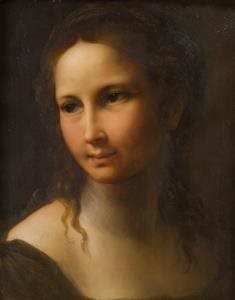
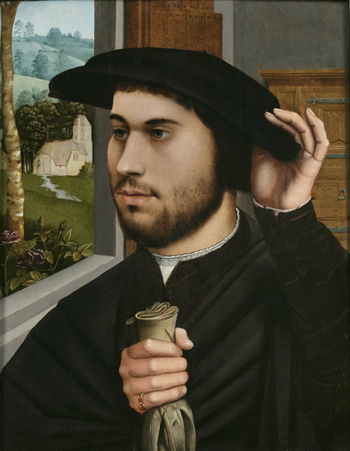
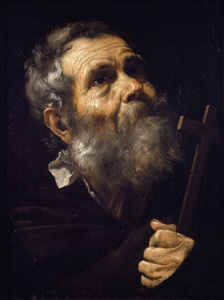
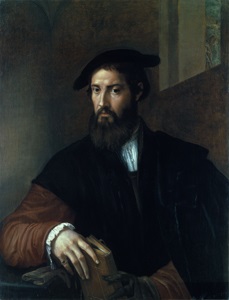
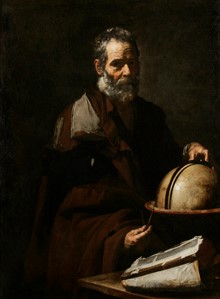
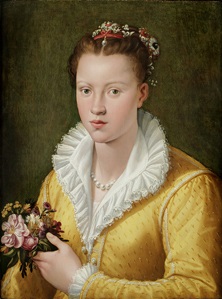
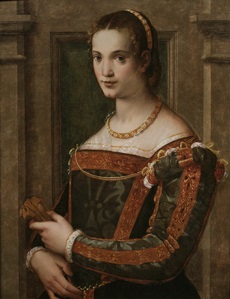
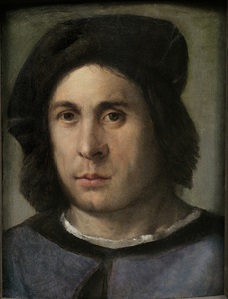
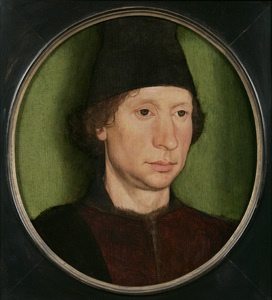
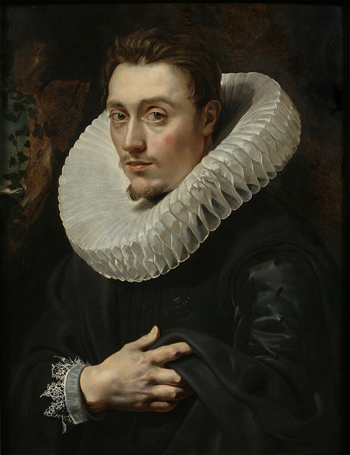


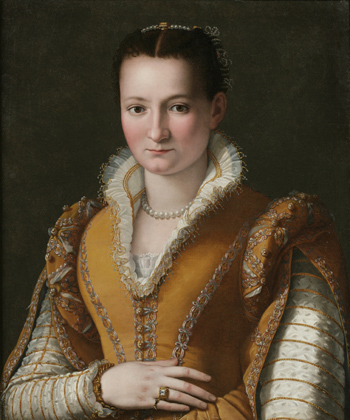
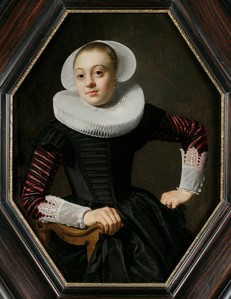
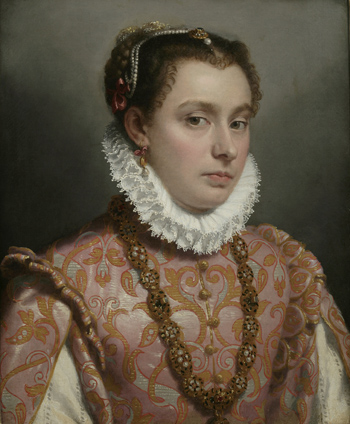
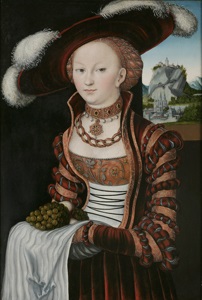
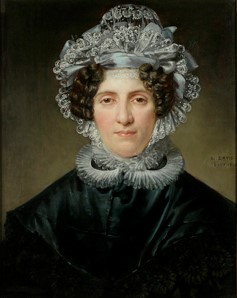
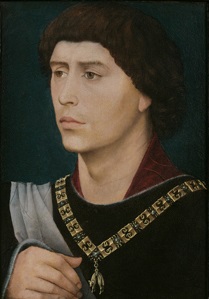
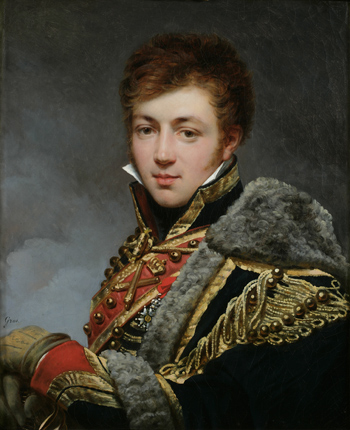
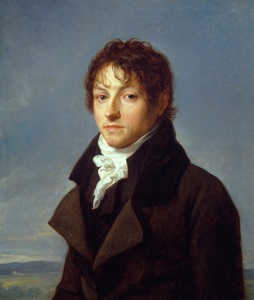

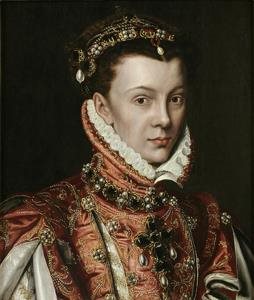
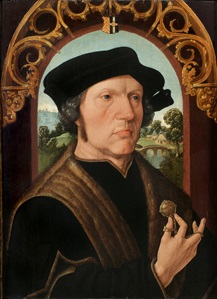
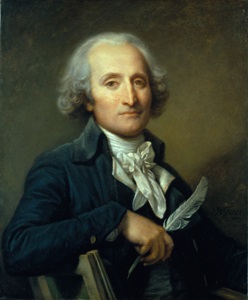
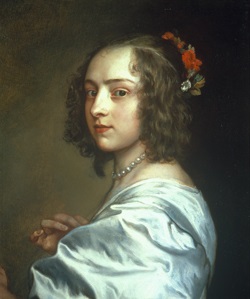
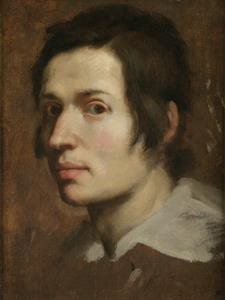
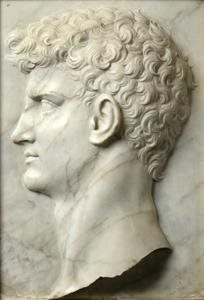
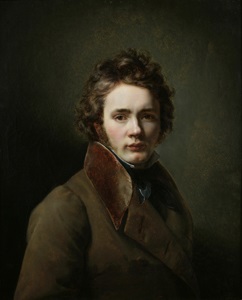
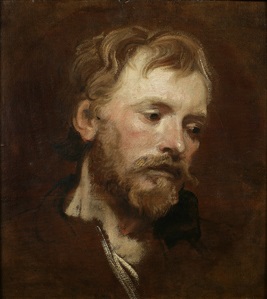
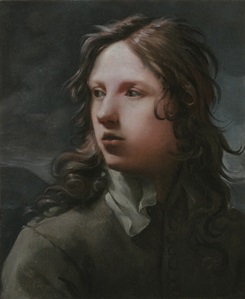
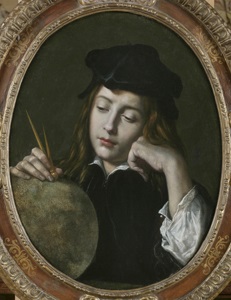































Artist Unknown
Italian
Head and Shoulders of a Woman
Painted in the sixteenth century
Oil on panel
It is not clear who painted this evocative and mysterious work. Many artists of the sixteenth century depicted idealized female heads, but no one has yet found a close-enough stylistic match to present a convincing argument in favor of a particular artist. Nevertheless, this intimate portrait is wonderfully expressive and accomplished—from the model’s oblique look and lovely tendrils of loose hair to the darker areas where colors and brushwork dissolve into the background.
Ambrosius Benson
Netherlandish, active by 1519–1550
Portrait of a Man at a Window
Painted c. 1530
Oil on panel
The sitter’s sharp turn to the left suggests that this picture may have been the right-hand side of a diptych, perhaps one half of a marriage portrait. This might account for his gesture of greeting and the rosebush just outside the window. The gentleman’s hands—one grasping his gloves, the other reaching up to his hat—contribute to the painting’s special charm, though at one time they were considered a distraction and were painted over.
Jusepe de Ribera
Spanish, 1591–1652
A Saint Holding a Cross
Painted c. 1635–40
Oil on panel
Painted with only a small cross and a flash of crumpled linen collar, this unidentified figure displays the religious fervor common to many of the artist’s depictions of gritty, world-worn saints. The strongly illuminated face and hand contrast with the dark cloak and background in a bold yet compact image. Born in Spain, Ribera became a dominant artistic force in Naples and beyond, with his expressive portrayals of spiritual fervor and strong emotions.
Parmigianino
Italian, 1503–1540
Portrait of a Man
Painted c. 1530
Oil on canvas
This elegant gentleman glances warily at the viewer with a dignified but unwelcoming expression, as if his reading has been interrupted. A great draftsman, praised by the artist and biographer Giorgio Vasari for his portraits, Parmigianino activates the illusionary space by placing his sitter in a sharply angled room, with an oblique view through a window. In contrast to the general darkness, touches of pink and white flick across the hand and face and animate the surface of the canvas.
AG#303
Jusepe de Ribera
Spanish, 1591–1652
Philosopher with a Globe (Anaxagoras?)
Painted in 1630
Oil on canvas
One of many imaginary portraits of ancient philosophers painted by Ribera, this magnificent work was known only through copies before its recent rediscovery. The dignified, if tattered, philosopher—variously identified as Plato, Thales, or Anaxagoras—gazes out as if distracted from his investigation. Ribera’s elite patrons would have enjoyed puzzling through the visual clues to identify the subject. In high demand, such paintings reflect the intellectual and aesthetic values of their age.
AG# 313
Attributed to Girolamo Macchietti
Italian, 1535–1592
Portrait of a Girl Holding a Bouquet of Flowers
Painted c. 1570s
Oil on panel
With wonderfully coiffed hair and a brilliant yellow dress with a broad white collar, this young beauty looks at the viewer as if acknowledging receipt of her bouquet. More flowers decorate her jeweled headpiece, and a tiny sprig of blossoms peeks from behind her ear. Macchietti’s work shows the elegant line, elongated features, graceful gestures, and delicate flowers often seen in the work of painters from Northern Italy, such as Parmigianino.
Michele Tosini
Italian, 1503–1577
Portrait of a Lady
Painted c. 1560s
Oil on panel
For many years, Michele Tosini was characterized as a second-rate painter’s assistant in Renaissance Florence. More recent scholarship shows that he played an active role in the artistic movements of his time. Elegant portraits such as this one, with its serene gaze and lively hands, demonstrate Tosini’s talent. This work belonged to the Dutch art dealer Jacques Goudstikker, whose collection was stolen by the Nazis in 1940. It was finally restituted to Goudstikker’s heir in 2006 and sold shortly thereafter.
Attributed to Dosso Dossi
Italian, c. 1486–1542
Portrait of a Man
Painted c. 1510–15
Oil on panel
The informal nature of this image, painted on a small panel bowed with age, has suggested to some that it is a self-portrait. Although the attribution is not accepted by all scholars, the painting is now ascribed to Dosso Dossi, who spent his career in the service of the Este court in Ferrara. The measured gaze of the young man, who wears his hair long in the fashion of the early sixteenth century, seems to strip away the five hundred years separating his time from our own.
Hans Memling
Netherlandish, c. 1435–1494
Portrait of a Man in a Black Cap
Painted c. 1470–75
Oil on panel
Memling’s portrait is a convincing image of a young man, still unidentified, with broad features and wearing a purple tunic and a black cap. The oval format is unusual for the period, and the painting is without doubt a fragment of a larger, rectangular portrait that may have included the sitter’s hands. The precise naturalism and beautiful modeling attest to the artist’s training in the workshop of Rogier van der Weyden.
Peter Paul Rubens
Flemish, 1577–1640
Portrait of a Young Man
Painted c. 1613–15
Oil on panel
The immensely creative, learned, and productive artist Peter Paul Rubens was often at his best when painting pictures like this one, for private clients and friends. The sculptural quality of the sitter’s head and hand demonstrates the artist’s knowledge of human anatomy, while the brilliantly painted lace and ruff show off his dynamic brushwork and his remarkable ability to suggest rich textures by means of subtly modulated color.
Artist Unknown
Italian
Portrait of a Young Man Holding a Lira da braccio
Painted c. 1510–20
Oil on panel
This extraordinary portrait of a young man with a broken-stringed lira da braccio and a lemon in the foreground has defied attribution. Details such as the brocaded sleeve, the illusionistic window frame, and the meticulously painted instrument and hair have led scholars to suggest a number of possible artists, including the Florentine painter Piero di Cosimo and the Sienese artist Beccafumi. The painting may commemorate the end of a love affair, possibly attesting to the man’s continued devotion.
Francesco Maria Rondani
Italian, 1490–1550
Portrait of a Young Man Holding a Palm
Painted c. 1520–25
Oil on panel
Inscribed “this, sweet Victoria, is the living likeness of your lover . . . which I pray you to keep so that nothing can harm it,” this picture was surely intended as a special possession and may have been a wedding or betrothal portrait. The playful inscription and enigmatic symbols, such as the palm frond with two berries, suggest layers of personal meaning for the sitter, whose identity has been lost over time.
AG#305
Alessandro Allori
Italian, 1535–1607
Portrait of a Young Woman
Painted c. 1580s
Oil on canvas
Allori’s style was strongly influenced by the meticulous detail and courtly detachment of the work of his teacher and adoptive father, Bronzino. This young woman has been identified by some as Bianca Cappello, a member of the Medici family. Although Allori did paint many portraits for the ruling family of Florence, a close comparison with other portraits of Bianca suggests that this woman is someone else. In his typical courtly manner, here Allori painted the sitter’s fresh complexion, prominent jewels, elaborate dress, and delicate collar with great care and refinement.
Thomas de Keyser
Dutch, c. 1596–1667
Portrait of a Young Woman
Painted c. 1630–33
Oil on panel
Though small in scale, this portrait is wonderfully lifelike and arresting. Caught in mid-movement, with jutting elbows, tilted head, and insistent gaze, the sitter is portrayed as a distinct person with a distinct and specific personality. De Keyser painted small-format portraits like this one, with its sharply focused details, as well as more traditional life-size portraits, becoming one of the most successful portrait painters in Amsterdam before Rembrandt arrived there in the early 1630s.
AG#312
Giovanni Battista Moroni
Italian, c. 1525–1578
Portrait of a Young Woman
Oil on canvas
Painted c. 1564–70
Possessed of a remarkable ability to capture a vibrant human presence, Moroni portrays this young woman with a self-confident, and slightly unsettling, expression on her face. One of the most successful portrait painters of his time, the artist developed a direct and unpretentious style that combines minute description with psychological penetration. The sitter’s frank gaze challenges the viewer to see her as more than a pretty face in an extravagant costume.
AG#304
Lucas Cranach the Elder
German, 1472–1553
Portrait of a Young Woman Holding Grapes and Apples
Painted in 1528
Oil on panel transferred to canvas
This may be a likeness of a German princess or the mistress of a Saxon courtier, though the sitter’s elaborate costume and beautiful but somewhat bland features suggest a type rather than an individual. The smooth brushstrokes, saturated colors, and abundant details emphasize the fashionable dress and accessories. The grapes and apples suggest an invitation to enjoy the pleasures of the senses. Cranach worked in Wittenberg, Germany, where he served as court painter to the Electors of Saxony.
AG# 306
Jacques-Louis David
French, 1748–1825
Portrait of Ange-Pauline-Charlotte Ramel de Nogaret, née Panckoucke
Painted in 1820
[tombstone label]
Workshop of Rogier van der Weyden
Netherlandish, 1399/1400–1464
Portrait of Anthony of Burgundy
Painted c. 1465
Oil on panel
Anthony, the “Great Bastard of Burgundy,” was a brilliant soldier who served both his father, Philip III, Duke of Burgundy, and his legitimate half-brother, Charles the Bold. The contrast of light and dark passages forms a starkly abstract composition typical of portraits by Rogier van der Weyden, one of the greatest Northern Renaissance painters. Anthony wears the chain and medal of the Order of the Golden Fleece, the exclusive knightly order his father founded in 1430.
AG #301
Baron Antoine-Jean Gros
French, 1771–1835
Portrait of Count Honoré de La Riboisière
Painted in 1815
Oil on canvas
This vibrant and expressive portrait of a young captain of the Imperial Guard was produced at the request of the sitter’s mother. The officer’s tender expression, impeccable uniform, and windswept hair convey a believable sense of youthful vigor and military valor. La Riboisière’s father and younger brother, both killed during France’s invasion of Russia in 1812, had already been memorialized in a posthumous double portrait by Baron Gros, a leading painter of the Napoleonic era.
AG# 310
Baron François Gérard
French, 1770–1837
Portrait of Count Louis Joseph Marie du Plessis de Grénédan
Painted in 1801
Oil on canvas
Gérard initially supported the liberal ideas of the French Revolution, but by 1801 he had adapted to the changing political environment, even going so far as to paint ardent royalists like the Count du Plessis in order to make a living. The portrait is a tour-de-force of lively brushwork. Gérard records the textures of the sitter’s coat and cravat, the hint of a smile playing about his mouth and eyes, and the tousled curls of his fashionably unkempt hair.
Jacques-Louis David
French, 1748–1825
Portrait of Dominique-Vincent Ramel de Nogaret
Painted in 1820
Both David and Ramel de Nogaret had been supporters of the French Revolution, and of Napoleon, before their exile to Brussels after the restoration of the Bourbon monarchy in 1815. Though he relied on portraiture for his livelihood in Belgium, David rarely painted paired husband-and-wife portraits like these. The sharply focused images, with their precise details and their plain backgrounds, recall early Netherlandish portraits, to which David would have had access in Brussels. The two paintings were separated for many years until they were reunited in the 1990s.
AG#311
Alonso Sanchez Coello
Spanish, c. 1531–1588
Portrait of Elizabeth de Valois
Painted c. 1560
Oil on panel
Elizabeth, daughter of Henry II of France, married Philip II of Spain in 1559 as part of an important political alliance between the two countries. Portrayed here shortly after her marriage at the age of fifteen, Elizabeth appears extravagantly dressed and heavily jeweled, fully prepared for her role as queen. In this portrait Coello displays his ability to combine precise observation, learned during his training in the Netherlands, with a Venetian feeling for color so favored by the Spanish court.
AG# 302
Jacob Cornelisz. van Oostsanen
Netherlandish, c. 1472/77–1533 or earlier
Portrait of Jan Gerritsz. van Egmond van den Nijenburg
Painted c. 1518–20
Oil on panel
This prominent magistrate, sheriff, and burgomaster can be identified by his coat of arms. His sober costume, strong nose, slight under-bite, and sagging cheeks are meticulously painted, with very little idealization. He holds a sweetly scented pomander in one beautifully observed hand. The background has been identified as the landscape near Nieuwburg Castle, where Jan Gerritsz. served as bailiff and as castellan (keeper) of the castle during its sacking in 1517.
Jean Baptiste Greuze
French, 1725–1805
Portrait of Jean Tupinier
Painted in 1797
Oil on panel
Greuze enjoyed considerable success in his youth, but his career waned as he aged. In the mid 1790s, Tupinier, Greuze’s lawyer, helped resolve a long and difficult dispute with the artist’s family, providing Greuze with much-needed income. This portrait was painted to express the artist’s gratitude. Greuze’s remarkable technical abilities can be seen in the exquisite painting of the lawyer’s sympathetic expression, and in details like the cravat, the hand, and the quill pen.
Anthony van Dyck
Flemish, 1599–1641
Portrait of Margaret Lemon
Painted c. 1638
Oil on canvas
Margaret Lemon was Van Dyck’s lover and one of his favorite models. She was celebrated for her beauty, charm, and musical talent, but she also had a reputation for occasional outburst of temper; the look in her eyes suggests that her mood could change in a moment. The portrait demonstrates Van Dyck’s remarkable ability to imitate convincingly the textures of fabric, flowers, pearls, and flesh.
AG#307
Gian Lorenzo Bernini
Italian, 1598–1680
Portrait of the Artist’s Brother, Domenico Bernini (?)
Painted c. 1630–35
Oil on paper, mounted on canvas
The great genius of the Baroque, Bernini is best known for his sculpture and architecture. Extant paintings by his hand are usually portraits, often of friends and family. The fluid brushwork and smears from the artist’s fingers suggest that this keenly observed portrait of a young man was painted quite rapidly. A strong family resemblance supports the identification of the sitter as Bernini’s younger brother, Domenico.
AG# 309
Attributed to Baccio Bandinelli
Italian, 1493–1560
Profile of a Man
Sculpted c. 1540s–50s
Marble
With furrowed brow, intent gaze, and muscular neck, this carved profile suggests an idealized image of bravery and resolve. Relief sculptures inspired by classical models were popular in mid-sixteenth-century Florence and were a specialty of Baccio Bandinelli, whose fame was overshadowed—then as it is now—by that of Michelangelo. Impatient and resentful by nature, Bandinelli sometimes left important commissions unfinished, though an exceptionally well-executed sculpture such as this one attests to his great talents.
Jean-Augustin Franquelin
French, 1798–1839
Self-Portrait
Painted in 1820
Oil on canvas
Franquelin was twenty-two years old when he painted this splendid self-portrait. His face is brightly lit, with hair apparently blown back from his forehead by the wind, his full lips slightly pursed. The facial expression suggests a powerful personality but also hints at a certain vulnerability or reticence. Although clearly an accomplished portraitist, Franquelin became best known as a painter of scenes drawn from French history, literature, and daily life.
Anthony van Dyck
Flemish, 1599–1641
Study of a Young Bearded Man
Painted c. 1618–19
Oil on paper laid down on panel
This young man’s head was probably painted very quickly from life. It emerges from the dark background into raking light that throws the high cheekbones and pointed nose into sharp relief. Although most of Van Dyck’s oil sketches can be linked to larger paintings, this work does not seem to relate to any known larger composition. While the purpose of this study remains unclear, it is a superb example of the artist’s ability to record a sitter’s appearance and capture a convincing thoughtful expression.
Michael Sweerts
Flemish, 1618–1664
Young Man in a Gray Jacket
Sweerts created a fascinating variety of pictures in Rome, Brussels, and Amsterdam before traveling as a lay missionary to India, where he died. In this portrait, individual brushstrokes remain distinctly visible on the surface of the canvas, while the sitter’s hair is silhouetted against the dramatically lit background. These details are characteristic of the unusual effects Sweerts explored in his work and they combine to give the portrait a romantic yet mysterious energy.
Cesare Dandini
Italian, 1596–1657
Young Man with Globe and Compass (Allegory of Geography?)
Painted c. 1630s
Oil on canvas
This painting demonstrates the distinctively decorative style for which Dandini was famous. Using very few colors and a rich contrast of light and dark, the Florentine painter accentuates the boy’s fresh complexion and tumble of auburn hair. Although the scientific instruments suggest an allegorical subject, the young man hardly appears engaged in scholarly pursuit, and the picture conveys instead a gentle sense of tender introspection.
AG# 314
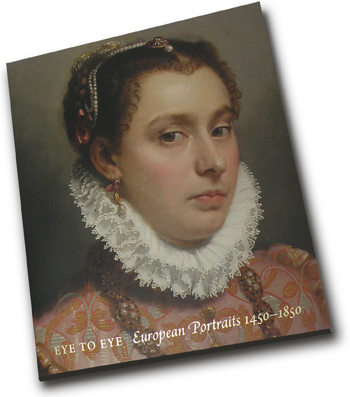
EYE TO EYE: EUROPEAN PORTRAITS 1450–1850
Richard Rand and Kathleen Morris
With an essay by David Ekserdjian
For centuries, portraiture has captured the imagination of both artists and viewers, not to mention the sitters themselves. A great portrait’s power to enthrall remains strong today, as is evident in the extraordinary group of masterworks recently assembled by a private collector and presented to the public for the first time.
Eye to Eye features thirty paintings by master artists from the late fifteenth through the early nineteenth century, including portraits by Hans Memling, Lucas Cranach the Elder, Anthony Van Dyck, Jean Baptiste Greuze, Jacques-Louis David, and other outstanding if sometimes lesser-known painters. The book brings to light a number of works that are virtually unknown, having never been published or publicly exhibited, including Portrait of a Man by the brilliant Mannerist artist Parmigianino; a remarkably fresh portrait of a young man by the Flemish master Peter Paul Rubens; two canvases by the great Spanish painter Jusepe de Ribera; and the glamorous and arresting Portrait of a Young Woman by Giovanni Battista Moroni, a sixteenth-century Italian painter famous for his penetrating depictions, and arguably one of the most talented portraitists of all time.
Published to accompany the Eye to Eye exhibition, this exquisite volume includes stunning color reproductions of each of the works as well as numerous full-page details. Informative texts by curators Richard Rand and Kathleen Morris, together with an insightful essay by the noted scholar David Ekserdjian, provide a fresh look at the range of styles, themes, and approaches in European portraiture.
Richard Rand is the Robert and Martha Berman Lipp Senior Curator and Curator of Paintings and Sculpture at the Sterling and Francine Clark Art Institute. Kathleen Morris is the Sylvia and Leonard Marx Director of Collections and Exhibitions and Curator of Decorative Arts at the Sterling and Francine Clark Art Institute. David Ekserdjian is professor of art history in the Department of History of Art and Film at the University of Leicester and a Trustee of the National Gallery, London.
Published by the Sterling and Francine Clark Art Institute, Williamstown, Massachusetts, and distributed by Yale University Press, New Haven and London
160 pages, 78 color illustrations
9 ½ x 11 inches
ISBN 978-0-300-17564-6
Published by the Sterling and Francine Clark Art Institute